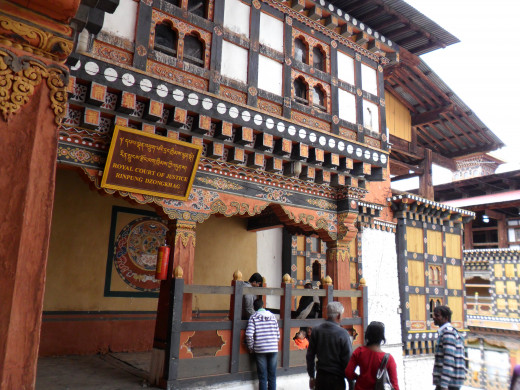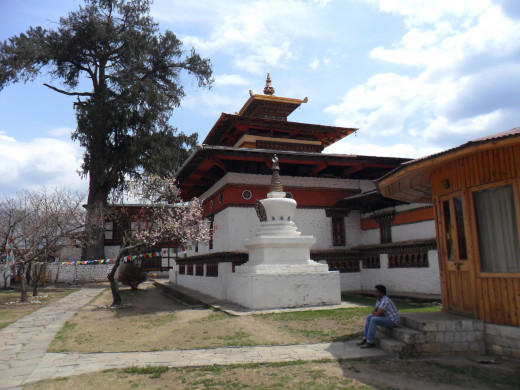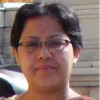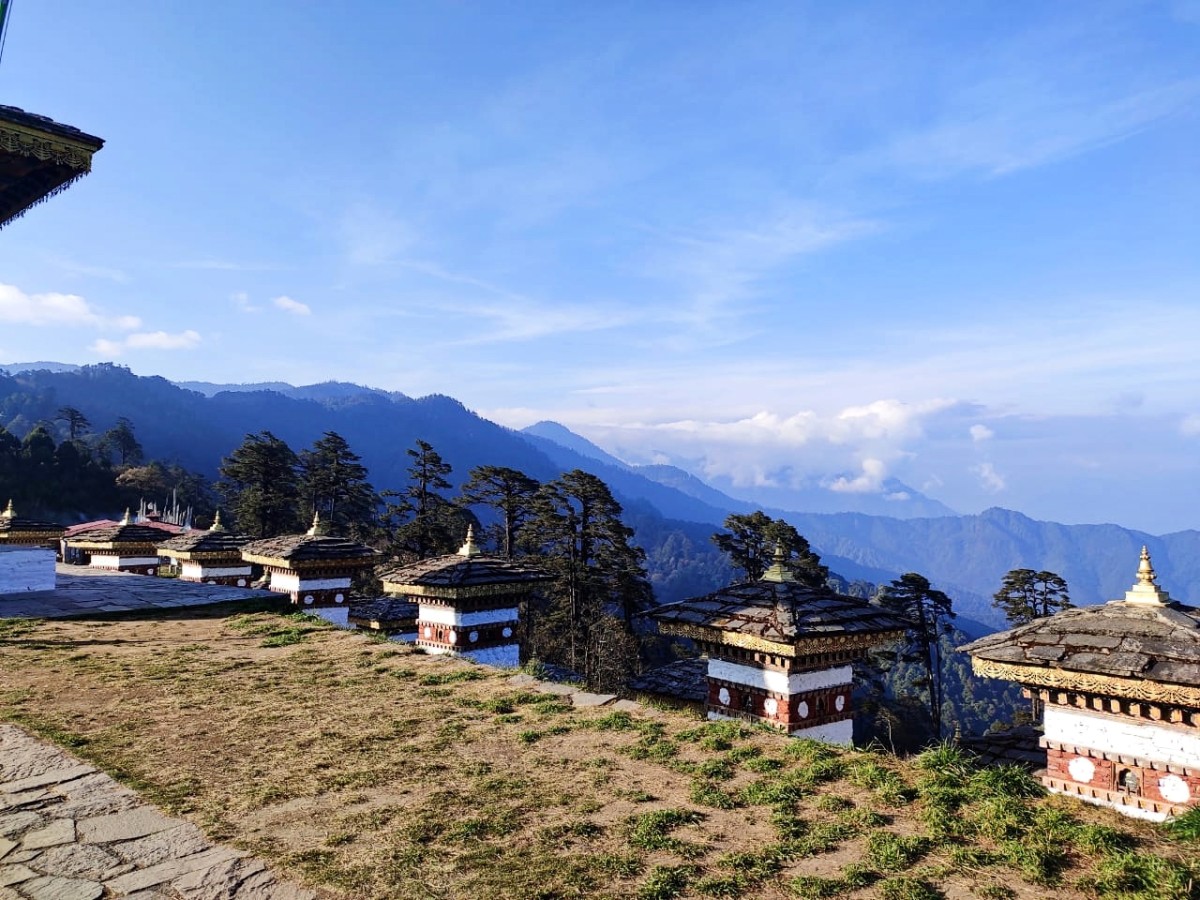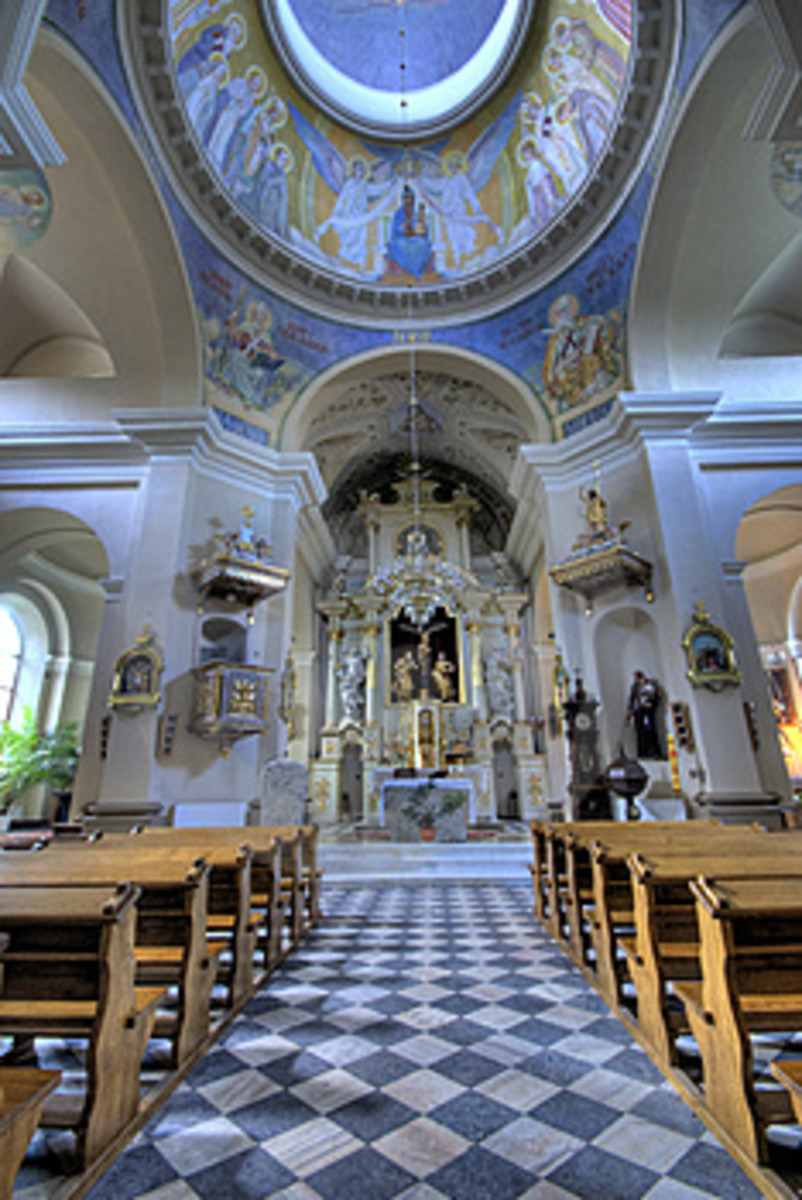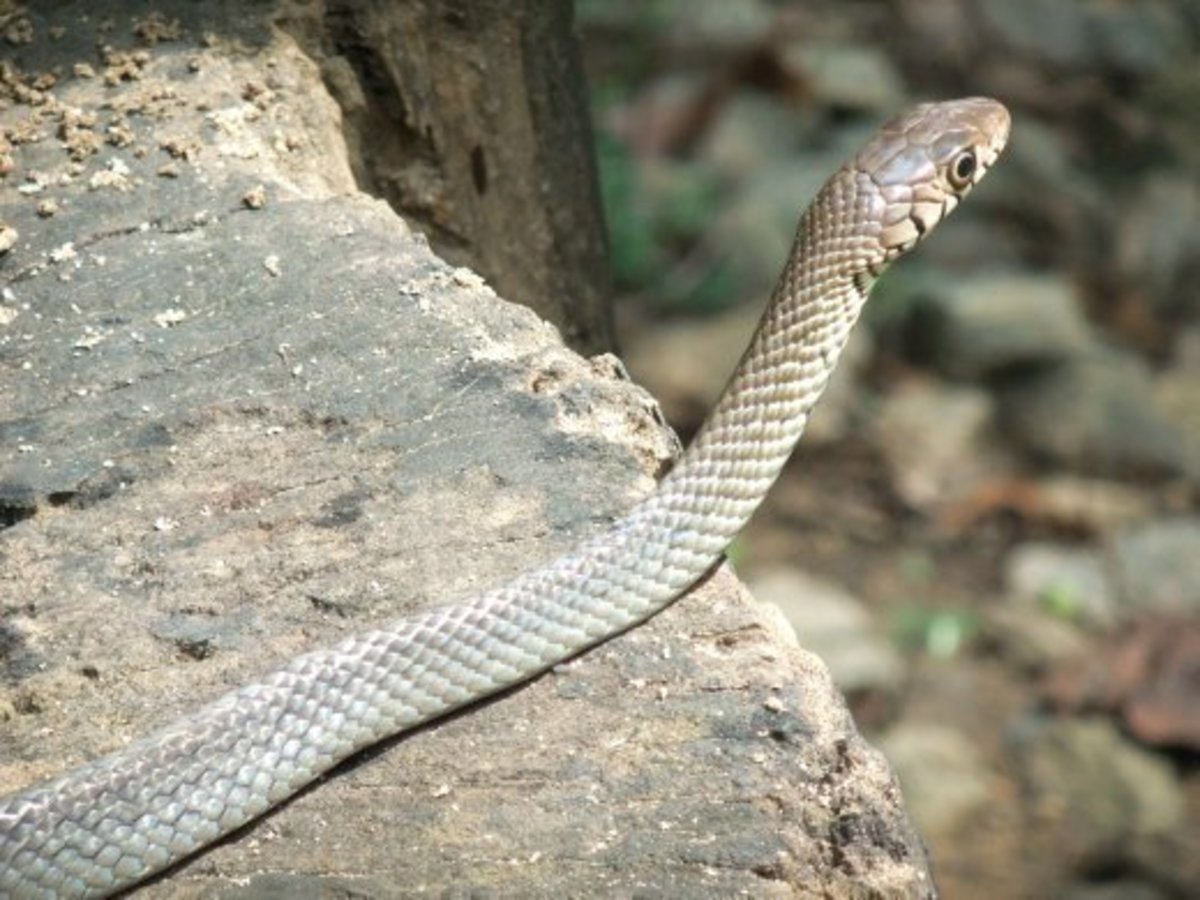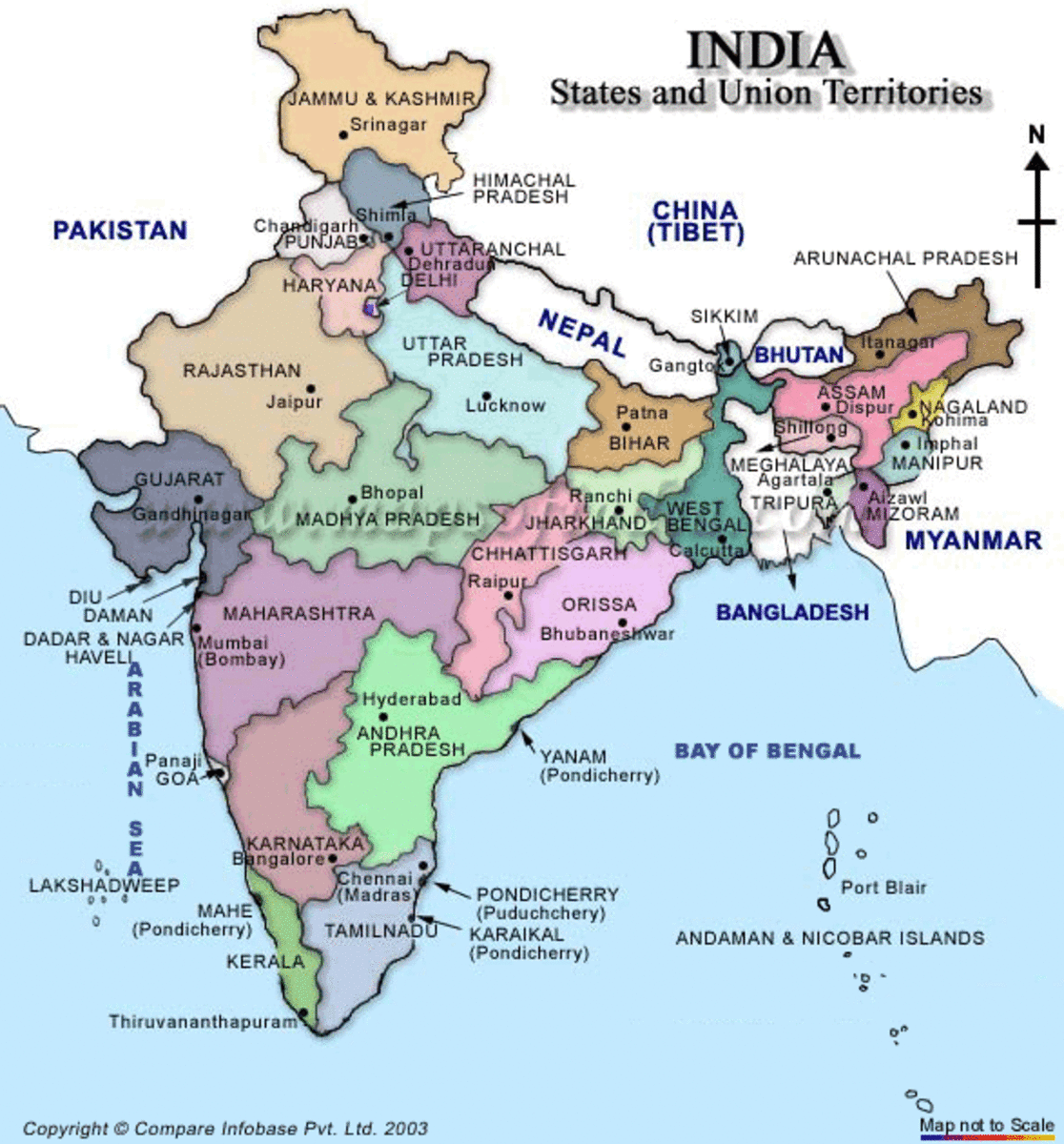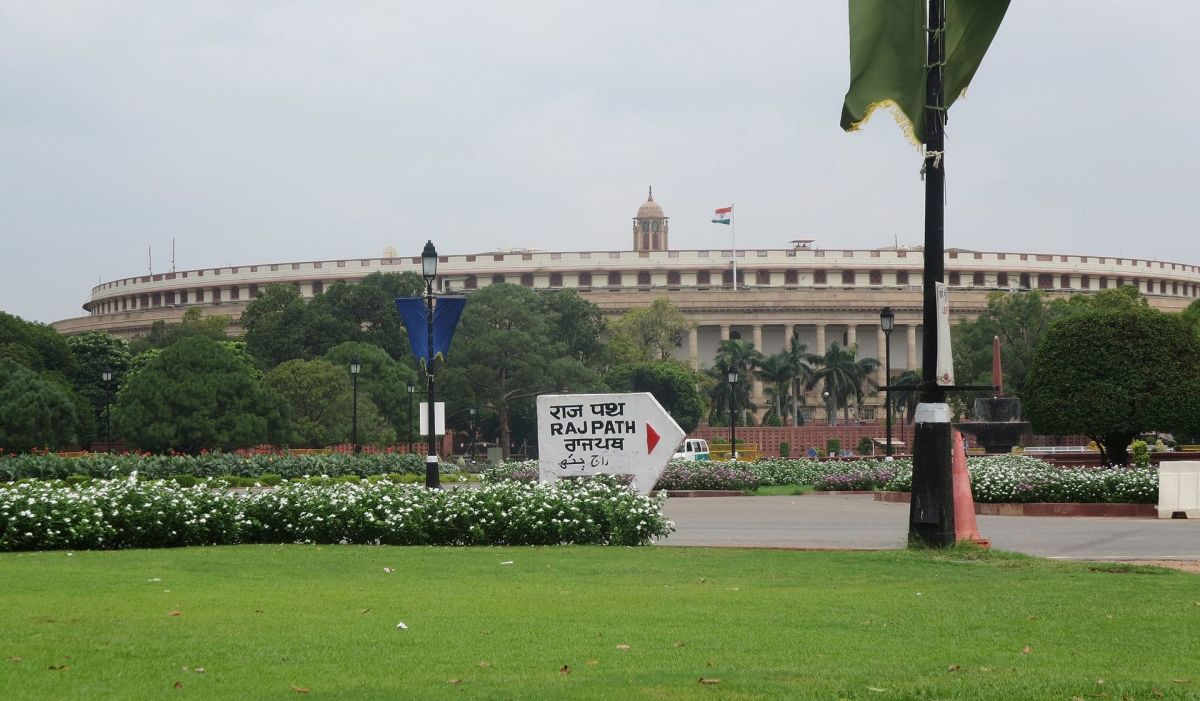- HubPages»
- Travel and Places»
- Visiting Asia»
- Southern Asia
BHUTAN - A SPIRITUAL JOURNEY
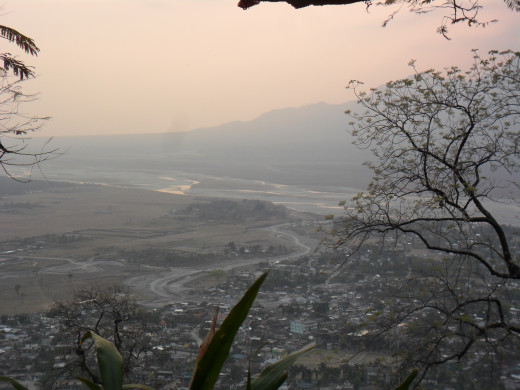
Tourism in Bhutan
Bhutan used to be isolated from the world till 1974 when this beautiful country opened its doors to tourists to earn revenue and let the world savor its unique culture. However to minimize the negative impact tourists could have on the vast, unspoiled landscape of Bhutan tourist activity is restricted to few places.
Most important tourist centers are Bhutan’s capital - Thimpu as well as Paro which has the Paro airport. The most comfortable mode of travel would be to fly to Paro , visit the nearby attractions and then travel by road to Thimpu, complete one’s sightseeing and return to Paro to take flight back. This method of travelling would ensure that one does not have to undertake the long tortuous road trips from Phuentsholing / Jaigaon.
Druk Air, the National Air Carrier of the Kingdom, operates regular fights to / from Paro to Delhi, Kolkata, Kathmandu and Bangkok. By road, entry into Bhutan is possible through southern border town of Phuentsholing. This frontier town is about 6 hours drive from Thimphu and Paro, 4 hours drive from Bagdogra and 7 hours drive from Darjeeling and Gangtok.
If you wish to experience the beauty of Bhutan be brave enough to take the back-breaking neck –kinking bus journeys where a new picture post card scenery awaits you at each turn of the road. Because of the spectacular landscape, Bhutan with its unique remoteness and quaint Buddhist monastries and “Dzongs” has a strange attraction.
It is difficult to explain and also to convey the sense of calmness and peace that descends on you when you are there. The shy and serene smile on the innocent face of the laborer eking out his living by hard labor is something to be experienced not explained.
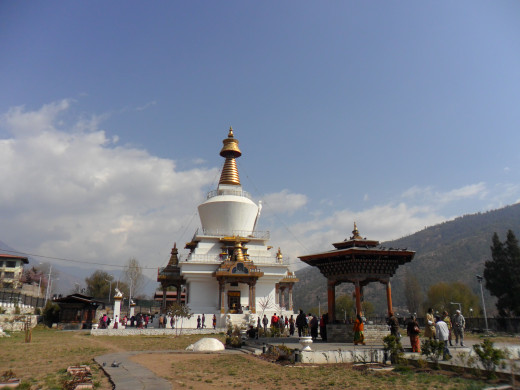
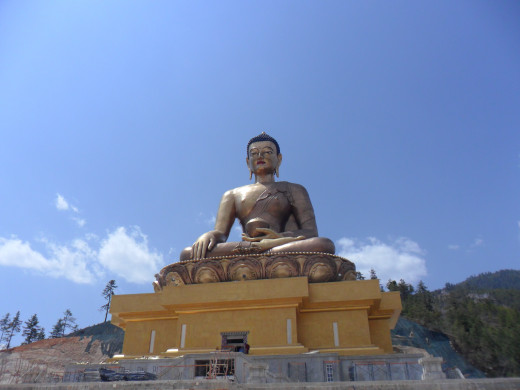
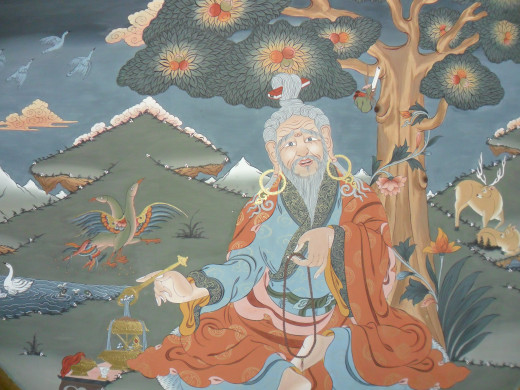
THIMPU
During the trip to Thimpu, we stayed at Hotel Singye in the heart of Thimpu city. The hotel has spacious rooms with running hot and cold water which is very important in the cold climes of Bhutan. On the first day at Thimpu after the long bus journey from Jaigaon, in the evening we took to exploring the market place on foot. During our exploration we wandered and went so far as to see the Changlimithang Stadium .
The next day we went on a local sightseeing trip around Thimpu our first stop being “Memorial Chorten” – a stupa built in the center of the city in the memory of the 3rd King of Bhutan. The brightly coloured prayer wheels turning softly were a sight to behold.
After this our next stop was the School of art and craft or the “Painting school” as it is popularly known . We saw many lovely painting and objects of art and craft there which we were tempted to buy but the prohibitive prices dampened our enthusiasm. However I took some photos of the pictures for my collection.
Our next stop was the National Library, both the new and the old buildings. There I had the privilege of meeting the Dy. Chief Archivist Mr. Lungten Gyamtsho who very graciously posed for a photo with my husband.
We were almost ready to give the Zoo a miss when someone remembered that we will miss the opportunity to see a Takin – which is Bhutan’s national animal. It has a goat’s head on the body of a cow.
The last on our list that day but the best was the Buddha Dordenma which is is a gigantic Shakyamuni Buddha statue under construction in the mountains of Bhutan. It is being made of bronze and gilded in gold. Upon completion, it will be one of the largest Buddha rupas in the world, at a height of 169 feet (51.5 meters).
The next day at Thimpu we rose early as we had two destinations to complete –Dochula Pass and Punakha Dzong.
Dochula Pass is around 3150 meter above sea level and is mostly draped in clouds. It was extremely cold there and strong breeze was blowing. Most of us were out of breath as we went around the 108 chortens. These 108 chortens were built by Queen Mother to honor the Bhutanese soldiers who were killed when fighting the Indian rebels in 2003.
Bhutan was forced to repel the rebels as India threatened to enter the country to do if they failed to do so themselves. Though Bhutanese wanted to built this chortens to mark the victory of Bhutanese army, the King rejected this offer and instead use the chortens to commemorate the deceased.
Next we went down to see the Punakha Dzong at around 1300 metres above sea level – The Palace of Great Happiness was built in 1637. The Punakha Dzong is probably the most beautiful Dzong in Bhutan. After The cold of Dochula Pass the warm climate of Punakha was really welcome .
Punakha was earlier the capital of Bhutan and the dzong was the center of religious and political power in Bhutan. The Punakha Dzong is located at the confluence of two rivers Pho Chu (father) and Mo Chu (Mother). It is open to visitors in the summer months and when the monks are on visit to Thimpu.
Paro was next on our itinerary and the next day we left Thimpu for Paro after breakfast.
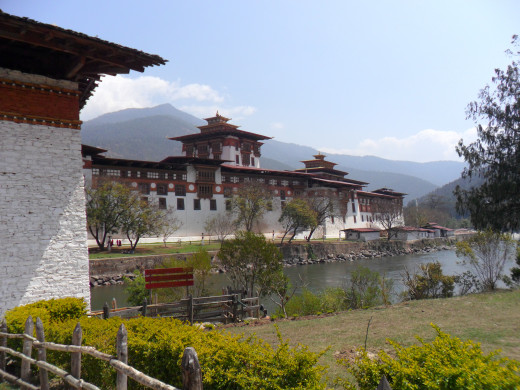
PARO
Though the airport is located in Paro, it is a much smaller than Thimpu. We had a good birds eye view of the Paro Airport and saw a flight land there. From our vantage position it appeared like a small quaint functioning model of an airport.
During our sightseeing trip, we visited Ta Dzong – one time watch tower . It serves as the National Museum but due to structural defects it is closed for repairs and the exhibition has been moved to the nearby hall.
Next we went to see the Rinpung Dzong which is a large Buddhist monastery and fortress. It houses the district Monastic Body and government administrative offices of Paro Dzongkhag.
In the fifteenth century Lama. Drung Drung Gyal built a small temple here and later a five storied Dzong or fortress which was known as Hungrel Dzong.In the seventeenth century, his descendants, offered this fortress to the Drukpa hierarch Shabdrung Ngawang Namgyal. In 1644 the Shabdrung dismantled the existing Dzong and laid the foundations of a new Dzong.In 1646 the Dzong was re-consecrated and established as the administrative and monastic centre of the western region and it became known as Rinpung Dzong. Inside Rinpung Dzong are fourteen shrines and chapels. I bought some “globules” from the monk which he said will cure 424 dieseases – of course I did not have the time to learn the names of the 424 diseases and hoped heartily that my weak knees and breathless lungs would feature.
Our last stop was the Kyichu Lhakhang . The Jowo Temple of Kyichuis one of the oldest temples in Bhutan being originally built in the 7th century. In here is the chorten containing the ashes of Dilgo Khyentse Rinpoche, a revered teacher who was cremated nearby.
There are two orange trees in the courtyard of Kyichu Lhakhang which bear fruit throughout the year. No one can pick the fruits and the legend is that the fruits fall in front of those who are very lucky. I lingered in front of them hoping to try my luck but to no avail. Yet I did not come back empty handed. The prayer flags fluttering in the wind and the strange peace that permeated the atmosphere somehow percolated into my city-worn soul and my heart bowed down.
